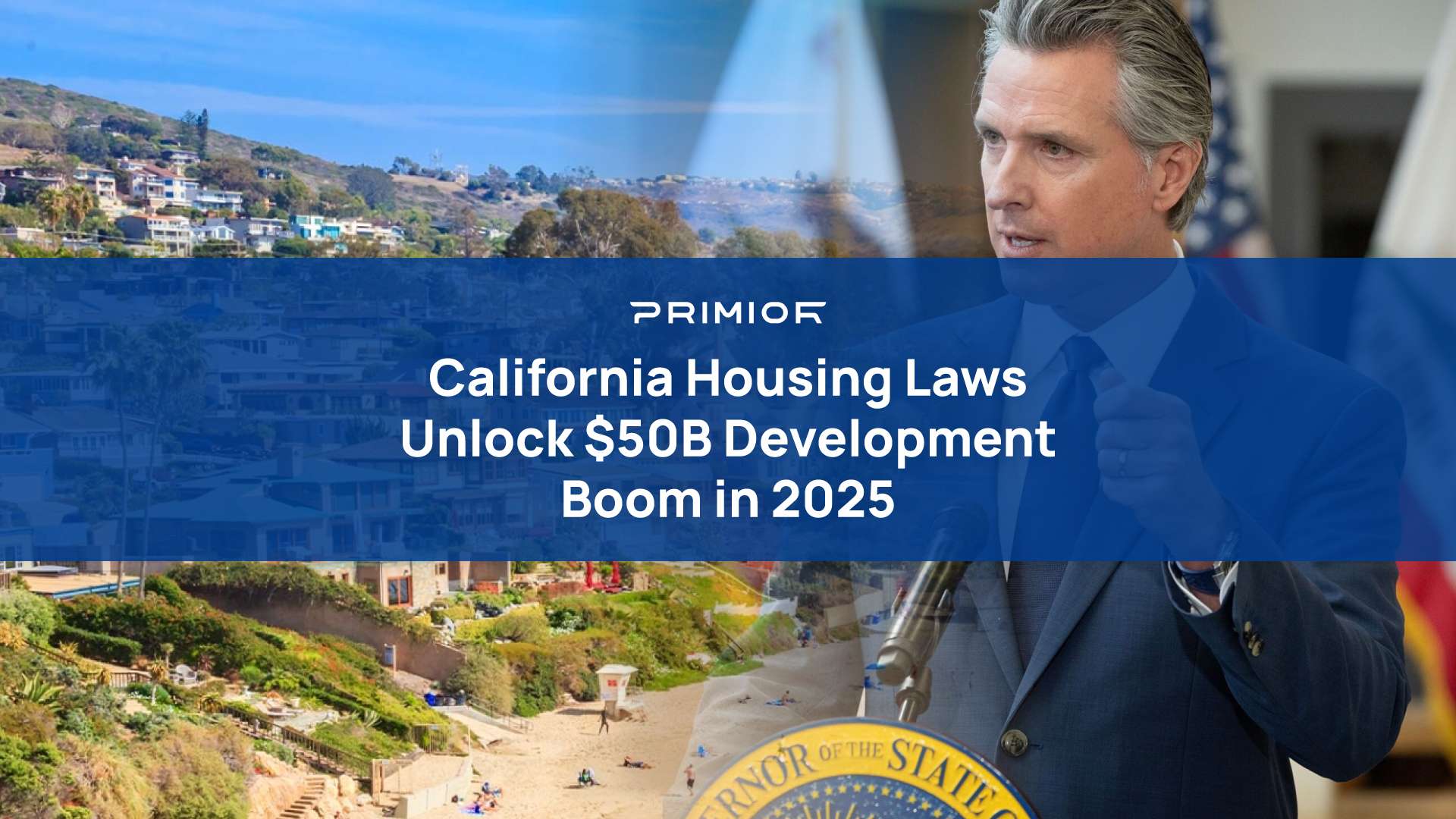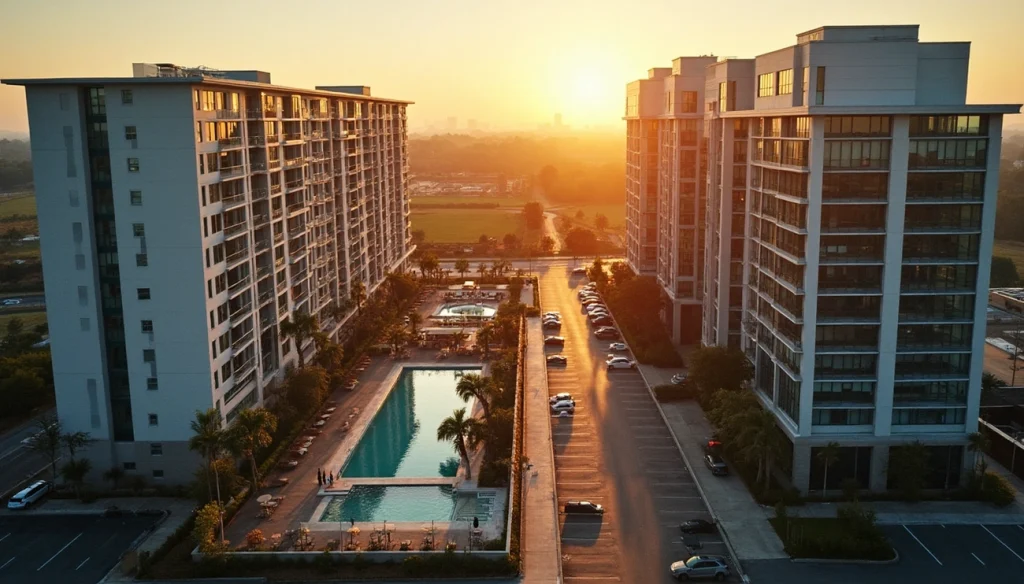California’s housing laws are experiencing their biggest overhaul in decades. Governor Gavin Newsom has signed more than 60 housing-related bills that will alter the state’s development landscape. These extensive reforms will take effect January 1, 2025. The groundbreaking “Builder’s Remedy” provision stands out by allowing developers to bypass local zoning restrictions for residential projects with affordable housing components. The new legislation brings vital updates to Accessory Dwelling Unit (ADU) regulations and offers impact fee deferrals that could cut development costs by up to 1%. Local authorities now prepare for a massive surge in permit applications. L.A. County expects 8,000 new rebuilding permits in fire-affected areas alone. These updates mark a defining moment in the state’s strategy to tackle its housing challenges and create new opportunities for real estate investment and development.
California Unveils Historic Housing Reform Package
“California has made steady progress on affordable housing production in recent years, but the housing crisis is far from over, and millions of Californians are continuing to struggle to find an affordable place to live. The best way to make housing more affordable is by building more affordable homes — while preserving the affordable housing we already have.” — Ray Pearl, Executive Director of the California Housing Consortium
California’s Legislature has passed its biggest housing reform package yet. Governor Gavin Newsom signed more than 60 housing-related bills into law. These new laws focus on speeding up housing production, making law enforcement stronger, and finding better ways to reduce homelessness.
Governor Signs 60+ Housing Bills
The reform package brings major changes to how housing development works in California. SB 1037 gives the Attorney General new powers to enforce these laws, with penalties between $10,000 and $50,000 per month for those who break them. Local governments must now plan for housing needs at all income levels, with special attention to residents with very low incomes under AB 3093.
These new laws make sure everyone follows the rules. AB 2023 creates a system where housing plans that don’t meet state standards are presumed invalid unless proven otherwise. AB 1886 makes it clear what local agencies need to do to comply with Department of Housing and Community Development (HCD) standards.
Key Changes Take Effect January 2025
The new rules will change California’s housing situation significantly when they start on January 1, 2025. AB 2243 opens up more development possibilities by increasing the size limit for regional mall sites from 20 to 100 acres. AB 2117 protects developers by not counting lawsuit time against permit deadlines.
The package also makes housing more accessible. SB 1395 makes it easier to build homeless shelters by exempting them from California Environmental Quality Act requirements and simplifies the process for Low-Barrier Navigation Centers. Cities now have to charge lower traffic impact fees for housing developments near transit under AB 2553.
These reforms show California’s commitment to fixing its housing problems. The laws work together to speed up approvals, hold local governments accountable, and create more opportunities for housing development for people of all income levels.
Builder’s Remedy Sparks Development Rush
California’s Builder’s Remedy provision has revolutionized how residential projects get approved in non-compliant jurisdictions. The new AB 1893 law, which takes effect January 2025, sets fresh standards that qualify projects and creates efficient approval processes with more development chances.
Simple Rules Make Approvals Faster
The new Builder’s Remedy framework lets mixed-income projects qualify with lower affordability thresholds. Projects need to meet just one of these requirements:
- 7% units for very poor households
- 10% units for low-income households
- 13% units for moderate-income households
The law now allows mixed-use projects to qualify with 50% residential square footage, down from the old two-thirds rule. These developments can also use state density bonus law to get more concessions, which helps them bypass development standards that could make projects unfeasible.
Developers Choose Better Locations
The TCAC/HCD Opportunity Map helps developers find areas where low-income families have better economic, educational, and health outcomes. This is a big deal as it means that affordable housing in better neighborhoods jumped from 12% to 53% since 2021 for family-serving developments.
Projects get higher density allowances when they’re within half a mile of major transit stops or in areas with low vehicle traffic. Notwithstanding that, developments must follow objective standards that apply to all projects equally.
First Projects Show Promise
The original Builder’s Remedy applications show how much this law changes things. Los Angeles approved 18 qualifying developments in just 2.7 months on average, while similar projects used to take seven months. San Francisco gave the green light to 10 developments under these rules, and nine of them offer only affordable units.
This efficient process works best for developments in areas already zoned for multifamily housing. It creates a clear path in places where complex local rules used to slow down new construction. Local agencies still retain control to set objective, measurable standards, as long as these rules apply to all developments in their area.
ADU Laws Transform Property Values
California’s ADU regulations have brought a fundamental change in property valuation dynamics. ADU construction permits jumped from 1,336 in 2016 to 26,924 in 2023. These permits now make up 21% of all homes permitted statewide. Property owners who add ADUs see their values rise by 20% to 30%. Premium markets like San Francisco and Los Angeles show the highest gains.
Multifamily Properties Gain New Revenue Streams
Senate Bill 1211 opens up more opportunities for multifamily property owners. The law now allows up to eight detached ADUs per property instead of two. This applies as long as the ADU count doesn’t exceed the existing number of primary dwelling units. Property owners can now turn unused parking areas into income-generating units without adding new parking spaces.
These changes affect multifamily properties by a lot. Property owners can add up to 25% more units to their existing buildings. San Francisco’s property owners with five or more existing units don’t face any cap on additional ADU construction. They just need to meet code compliance standards.
Coastal Zone Restrictions Ease
Senate Bill 1077 brings game-changing updates for coastal property development. The California Coastal Commission must give local governments clear guidance by July 1, 2026. This guidance will help streamline ADU approvals in coastal zones. The new rules deal with old barriers that made coastal ADU development complex and slow.
The law removes several traditional roadblocks. Coastal zone properties now enjoy faster permit processes, especially for attached and conversion ADUs that don’t need major structural changes. These updates lead to quicker approvals, but beachfront properties might still need to meet extra design requirements.
Money matters remain a big deal. Development costs in stricter coastal areas might go up by about $16,000 due to special design needs. But the chance for higher rental income and property value appreciation still makes coastal ADUs worth investing in.
Impact Fee Reforms Boost Project Viability
California’s development impact fees have undergone major reforms that changed how housing construction is financed. Multifamily housing in California costs $21,703 per unit in impact fees, which is almost triple the national average of $8,034. The new changes target fee timing and structure to make projects more viable.
Fee Deferrals Cut Construction Costs
Senate Bill 937 brings important changes to how fees are collected. Developers can now wait to pay impact fees until they receive their certificate of occupancy, instead of paying when building permits are issued. This option helps developments under 10 units and multifamily buildings that have deed-restricted affordable housing units. The Terner Center found these deferrals could lower total development costs by about 1%.
Developers in Los Angeles pay more than $140 million yearly in fees to cover infrastructure impacts. The old system collected these fees early in development when financing was most expensive. The new deferral program matches costs better with public benefits and makes projects more feasible.
Transit-Oriented Projects See Lower Fees
Assembly Bill 2553 now considers major transit stops to be sites where busses run every 20 minutes, changed from the previous 15-minute requirement. This change reduces traffic impact fees for nearby housing developments. Housing projects near major transit stops must now pay lower traffic impact rates than those built elsewhere.
Small Projects Benefit Most
The new framework gives special attention to projects with fewer than 10 units. These projects get key benefits:
- No interest charges on deferred fees
- Freedom to pay at certificate of occupancy
- Easier fee processing
Single-family homes in California face impact fees of $37,471, which is much higher than the national average of $13,627. Small project developers pay more than their fair share because fees don’t scale down well for smaller developments. The new structure fixes these issues through targeted relief measures.
Local agencies can still collect fees earlier if they’ve already set aside funds for specific improvements like water, sewer, fire, public safety, emergency services, roads, sidewalks, transportation improvements, or school facilities. However, certain affordable housing developments are exempt from these earlier collections, which supports building more affordable units.
Market Analysis Reveals Investment Hotspots
Recent housing reforms have made Southern California the biggest winner in California’s real estate market. Property values in Riverside and San Bernardino counties show promising growth potential with an expected rise of 8.8%.
Southern California Guides Development Pipeline
Riverside and San Bernardino counties have become the center of attention. These areas show a combined 20.2% growth in existing home sales and price appreciation. Los Angeles remains a major hub for investments. Investor purchases make up 42% of all transactions here.
New transit-oriented policies have sparked development in several areas. A great example is Culver City’s $66.5 million affordable housing project that speeds through approval processes. Many other Southern California cities report more development applications, especially for projects close to major transit stops.
The region’s growth benefits from several advantages. Riverside has programs that reward new developments. San Bernardino’s ongoing revival efforts catch investors’ attention. San Diego’s coastal market stays strong too, with properties finding buyers within 12 days of listing.
Top 5 Counties by Investment Volume
Looking at combined sales growth and price projections for 2025, these counties lead the pack:
- Riverside-San Bernardino: 20.2% combined growth
- Ventura County: 16.2% total market expansion
- San Joaquin County: 16.0% growth in Stockton region
- Kern County: 15.9% increase in Bakersfield area
- Sacramento County: 14.1% market growth
The Central Valley shows impressive momentum. Fresno expects 13.2% growth. Inland markets create better opportunities for investors. Coastal regions have more rules to follow and cost more to enter.
Small and medium-sized investors lead market activity. They account for 60% of all investor purchases in major metropolitan areas. This shows growing trust in Southern California’s market strength, backed by new laws that make development easier.
Conclusion
California’s game-changing housing reforms point to $50 billion in development chances through 2025. These complete changes are reshaping the state’s real estate scene. Southern California stands out as the main winner. The Builder’s Remedy provision gives developers major chances to build, while ADU rule changes have pushed property values up by 20-30%. New fee reforms have cut development costs and made projects viable for builders of all sizes.
Market research shows strong growth ahead. The Inland Empire looks promising, as Riverside and San Bernardino counties expect 20.2% combined growth. These reforms tackle old development hurdles head-on. They speed up approvals and create fresh chances for major developers and homeowners alike.
Without doubt, these changes mark a turning point for California’s real estate. Southern California has become an attractive investment market thanks to faster processes, lower fees, and expanded building rights. The region’s strong foundation and new laws point to steady growth through 2025 and beyond.















